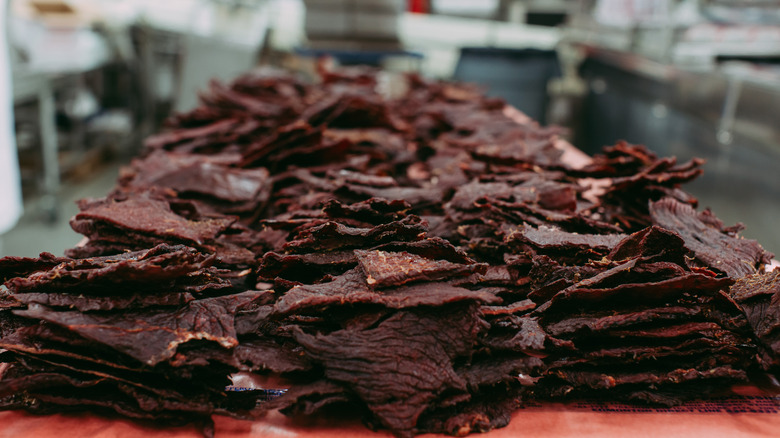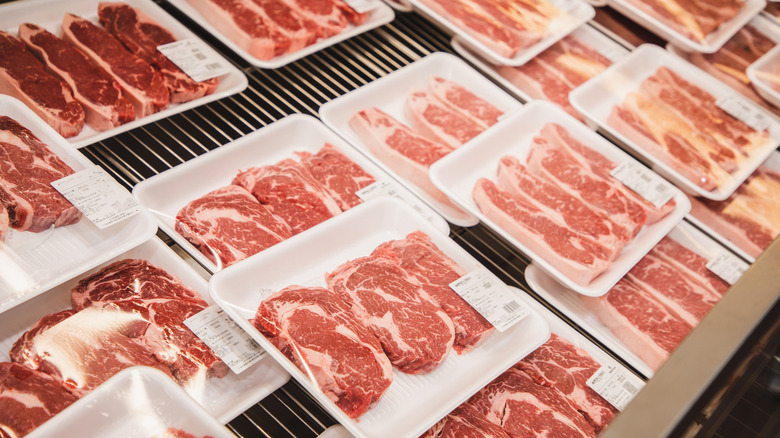What Kind Of Beef Should You Use For Jerky?
Beef jerky, a popular protein-packed snack found everywhere from convenience stores to large retailers like Costco, offers an irresistible combination of savory flavors. From barbecue to honey garlic, these seasonings create a taste that leaves you wanting more as you munch your way through the bag. While turkey, pork, and even venison versions exist, beef jerky remains the standout favorite, with even Beyond Meat offering a plant-based alternative. But turning meat into jerky isn't as simple as it might seem. The process involves selecting the right cuts of beef to achieve that perfect chewy texture and mouth-watering flavor without causing you to break a tooth.
When choosing the cut of beef for your jerky, it's important to consider both texture and flavor. Popular cuts like the top or bottom round are reliable options, offering a balance of tenderness and chew. The Eye of the Round is an ideal choice for those seeking a more flavorful jerky. This lean cut may not be the most tender, but it excels at absorbing flavor during the process. Plus, it's an affordable option. If you have a bit more to spend, consider the lifter meat (also known as "cap and wedge meat"), which comes from the rib primal. This lean cut has just enough marbling to add tenderness, creating a more satisfying jerky without being overly chewy.
The key to the perfect jerky.
When selecting your cut of beef, it's crucial to focus on fat content. Since jerky is made by dehydrating meat, fat doesn't fully dry out, leading to a shorter shelf life. The leaner the cut, the longer the jerky will last. So, while it may like a snack you could have in the apocalypse, it, in fact, does not last forever. If you pick a cut that has a higher fat ratio, or marbling, just be wary of the jerky expiring faster. This is especially true if you're using cuts with higher intramuscular fat(the fat that runs between muscle fibers). However, the fat found on the outside of the meat — intermuscular fat — can be easily removed before dehydrating, leaving you with a leaner, more pleasant jerky experience.
When you pick out a leaner piece of beef, it tends to help your wallet, too. This is because the cut doesn't need to be fancy or have much marbling, rather the process of creating jerky makes those lean and tougher pieces of meat a bit more tender, so leave that perfectly cut tri-tip steak for another day. Lastly, remember that you are dehydrating the meat, which will shrink it, so account for the loss. So, whether it's your first time making jerky, or you're a seasoned veteran, try a new cut of beef and see if it ends up being your preferred choice.

